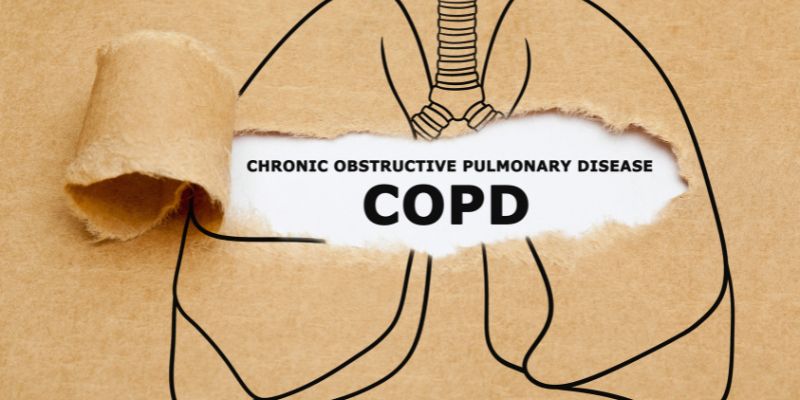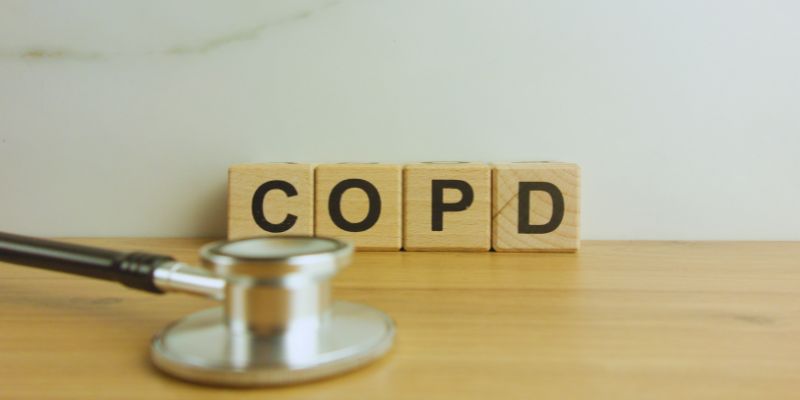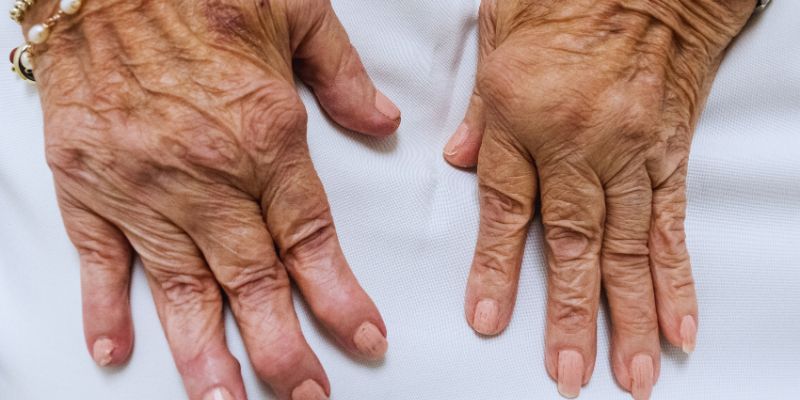Understanding the Signs And Symptoms Of COPD: A Comprehensive Guide
Advertisement
One long-term lung disorder is chronic obstructive pulmonary disease (COPD). Over time, it makes breathing challenging. Millions of people worldwide suffer from COPD. Early recognition improves its management. Emphysema and chronic bronchitis constitute COPD. Though medication slows it down, the condition gets worse. Key culprits are air pollution and smoking. Initially minor, symptoms get worse with time. Early awareness of symptoms enhances the quality of life.
Many dismiss symptoms since they believe they are typical. Breathlessness and a chronic cough could point to COPD. Early diagnosis facilitates improved treatment and adjustments in lifestyle. Knowing COPD symptoms helps one seek appropriate treatment. This article addresses typical symptoms of COPD. Early COPD management results in improved general condition.
What is COPD?
One of the progressive lung diseases, chronic obstructive pulmonary disease produces progressively difficult breathing over time. It covers emphysema and chronic bronchitis, which compromise the lungs and airways. Globally, millions of people have COPD; it is the main cause of disease and impairment. The most often occurring causes are long-term lung irritation, exposure to chemical fumes, air pollution, and cigarette smoke. Usually beginning with a cough, wheezing, and shortness of breath, symptoms progressively get worse.
Many people dismiss early symptoms, believing they are normal aging or minor problems. However, early diagnosis is essential for properly controlling COPD. Although the illness cannot be cured, lifestyle modifications, oxygen therapy, and medication can help slow its development. One can help prevent COPD by quitting smoking and avoiding lung irritants. Early recognition of symptoms and obtaining medical care can help to enhance general health outcomes and quality of life.

Common Symptoms of COPD
COPD symptoms advance over time and start slowly. Early indications can guide one toward appropriate medical attention. The main COPD symptoms include:
Persistent Cough
A persistent cough is one early COPD symptom. Weeks or months go by without any progress. This cough, especially in the morning, occasionally produces mucus. Many smokers ignore a cough they start to have. A persistent cough suggests inflammation of the lungs. Though it can be exhausting, the cough helps clear mucus. Medical advice is needed if it does not go away. One could also get a dry cough. Coughing worsens over time as COPD develops.
Increased Mucus Production
Though it protects the lungs, too much mucus is harmful. Mucus produced by COPD causes frequent throat cleaning and congestion. Thick mucus plugs airways, thereby making breathing difficult. Variations in mucus color can point to illness. Drinking water aids in mucus loosening, so it facilitates removal. Cold temperatures and pollution aggravate mucus build-up. Doctors can prescribe medication to control mucus output and enhance breathing comfort. Control of mucus lessens lung infections and problems with breathing.
Shortness of Breath
One of the main COPD symptoms, dyspnea, usually shows up during physical exercise. Walking, climbing stairs, and even simple chores get more difficult. Lung deterioration associated with COPD can cause chest tightness. The lungs lose flexibility, which makes breathing harder. Exercises for breathing help to increase lung capacity. Many mistake dyspnea for inadequate fitness or aging. Shortness of breathing gets worse as COPD advances. Bronchodilators help to open airways and ease breathing.

Wheezing and Chest Tightness
Wheezing results from airway constriction brought on by COPD. The whistling sound of breathing is wheezing. It occurs as air battles to pass through obstructed airways. In COPD patients, wheezing is sometimes accompanied by chest tightness. During flare-ups or infections, these symptoms get worse. Inhalers enhance breathing by helping to relax airway muscles. Wheezing might start from smoke and dust. Using prescribed therapies and controlling triggers helps to ease breathing comfort and lessen wheezing.
Fatigue and Weakness
Weakness and exhaustion arise from COPD's effect on the body working harder to get oxygen. Low oxygen levels make regular work taxing, and little chores also seem challenging. Bad sleep makes one more tired and feeble. Oxygen treatment increases vitality. A healthy diet builds muscles. Regular exercise increases endurance. Good rest, diet, and medical treatment can control tiredness, improving daily performance and general well-being. Control of COPD symptoms enhances the general quality of life.
Frequent Respiratory Infections
COPD damages the lungs, increasing a patient's susceptibility to infections. Colds, flu, and pneumonia can all be caused readily by bacteria and viruses. Even a small cold could cause extreme trouble breathing. Infections aggravate coughing and produce more mucus. Vaccines help stop flu complications. Washing hands and avoiding crowds help to lower infection risks. Early medical attention guarantees prompt treatment and helps to prevent major consequences by improving lung conditions.
Unintentional Weight Loss
Severe COPD could induce inexplicable weight loss since the body requires more energy for breathing. Eating becomes difficult because of breathlessness, which reduces appetite and causes nutrient shortages. Losing weight reduces muscles, which makes one more exhausted. Foods heavy in calories help to maintain a good weight. Little, consistent meals help to simplify eating. One may require dietary supplements. A balanced diet improves lung health, increasing general well-being, vitality, and strength.
Swelling in Ankles, Feet, or Legs
Lower body fluid accumulation brought on by COPD's reduced heart function can be uncomfortable. Poor oxygen supply causes this swelling, sometimes termed as edema. Walking uncomfortably with swollen legs and feet is cutting back on salt, which helps manage edema. Leg elevation lowers fluid retention. Stockings designed for compression help circulation. One could need medication. Addressing the fundamental cause can enhance general health and stop the aggravation of symptoms. Properly controlling COPD improves the quality of life.
Conclusion:
A major lung disorder, COPD gradually compromises breathing. Early symptoms include shortness of breath, more mucus, and a cough. Common also include wheezing, tiredness, and regular infections. Acknowledging these indicators facilitates the search for appropriate treatment. Ignorance of COPD aggravates the condition; early treatment makes a difference. Using medication and lifestyle modifications helps to control symptoms, therefore enhancing quality of life. Steer clear of triggers such as pollutants and smoking to preserve the lungs. Exercise and a good diet help in well-being. Frequent visits help control COPD. Acting early slows down the spread of a disease.
Advertisement












